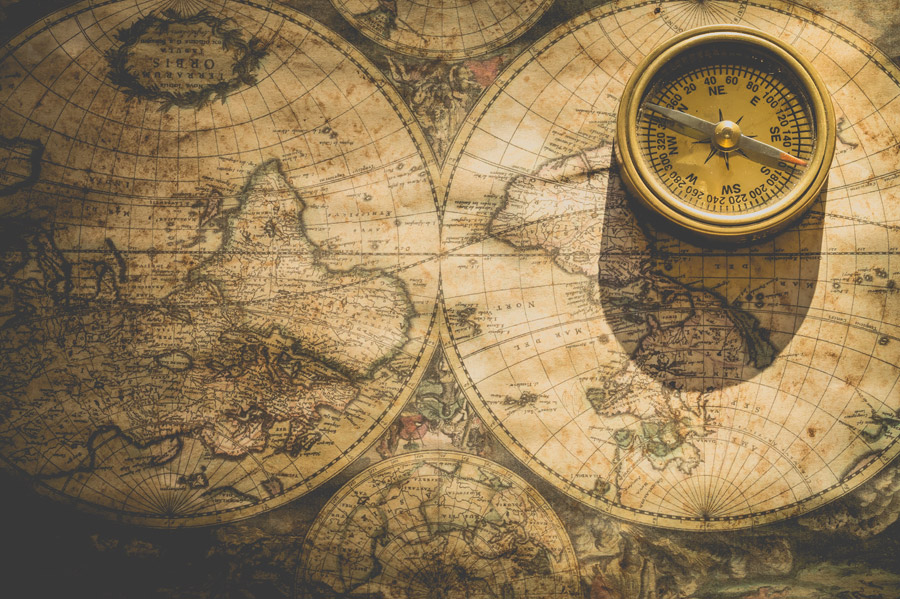今回はユアル・ノヴァ・ハラリの『サピエンス全史』を原書で読んでみます。
ハラリはイスラエルの歴史学者。本書の中身は人類7万年の歴史を一挙に物語るもので、その面白さと明快さで多くの読者を獲得し、世界的ベストセラーになりました。
読みやすい英語で書かれているため、英語学習者にもおすすめの本。明らかに小説よりも簡単です。
『サピエンス全史』の冒頭パートを英語で読んでみる
ではまず最初のページを引用します。
About 13.5 billion years ago, matter, energy, time and space came into being in what is known as the Big Bang. The story of these fundamental features of our universe is called physics.
About 300,000 years after their appearance, matter and energy started to coalesce into complex structures, called atoms, which then combined into molecules. The story of atoms, molecules and their interaction is called chemistry.
about 3.8 billion years ago, on a planet called Earth, certain molecules combined to form particularly large and intricate structures called organisms. The story of organisms is called biology.
About 70,000 years ago, organisms belonging to the species Homo sapiens started to form even more elaborate structures called cultures. The subsequent development of these human cultures is called history.
Three important revolutions shaped the course of history: the Cognitive Revolution kick-started history about 70,000 years ago. The Agricultural Revolution sped it up about 12,000 years ago. The Scientific Revolution, which got under way only 500 years ago, may well end history and start something completely different. This book tells the story of how these three revolutions have affected humans and their fellow organisms.
最初の文から見ていきましょう。
About 13.5 billion years ago, matter, energy, time and space came into being in what is known as the Big Bang. The story of these fundamental features of our universe is called physics.
「約135億年前、ビッグバンとして知られる現象によって、物質とエネルギー、時間、空間が誕生した。われわれの宇宙がもつ根本性質、それを扱う物語は物理学と呼ばれる」
英文を読むときはまず「主語はどこだろう」と意識します。
しょっぱなにaboutが来ているのでこれがかかる部分は主語じゃないなとうっすら確認。
じゃあ主語はどこだろうと意識を切り替えてmatter(物質)を発見。カンマで区切られて名詞がずらずら並ぶので、これは全部主語だろうと予想。
すると動詞のcome into being(誕生する)が登場するので、予想はやっぱり当たり。matter, energy, time and spaceがぜんぶ主語でした。
「matter, energy, time and space」が「come into being」するということ。「in what is known as the Big Bang」は補足情報。
では次の段落。
最初の段落とまったく同じ形式になっているところに注目。
About 300,000 years after their appearance, matter and energy started to coalesce into complex structures, called atoms, which then combined into molecules. The story of atoms, molecules and their interaction is called chemistry.
「その出現から30万年ほど経つと、物質とエネルギーは複雑な構成体へと統合されていく。この構成物は原子と呼ばれ、この原子がさらに集まることで分子となった。原子と分子、そしてそれらの相互関係を扱う物語は化学と呼ばれる」
aboutから始まり、the story ofで締めくくられる形。第一パラグラフと同じ形式ですよね。これが以降も何度も繰り返されていきます。
「coalesce into complex structures, called atoms, which then combined into」のところは英文を左から右に順番通りに読むトレーニングに最適の箇所。
合体して複雑な構成になった→それはアトムと呼ばれた→そんでもってそれがさらに合体して~、というふうに読み下していきます。
which以下を読んでからそれを前半部分に修飾させるみたいな読み方はしません。whichは「そんでもってそれは」と解釈し、左から右へとまっすぐに読み下します。
・coalesce into~ 合体して~になる
about 3.8 billion years ago, on a planet called Earth, certain molecules combined to form particularly large and intricate structures called organisms. The story of organisms is called biology.
「およそ38億年前、地球と呼ばれる惑星では、いくつかの特定の分子が結合し、生物と呼ばれる大きく精巧な構造が生まれた。有機体を扱う物語は生物学と呼ばれる。」
「certain molecules combined to form particularly large and intricate structures called organisms」も左から右へと順番どおりに読みます。ある分子が結合した→形作った、大きくて精巧な構造を→それは生物と呼ばれる。
・organisms 生物、有機体
About 70,000 years ago, organisms belonging to the species Homo sapiens started to form even more elaborate structures called cultures. The subsequent development of these human cultures is called history.
「7万年前になると、ホモサピエンスと呼ばれる種に属する生物が、文化と呼ばれるさらに込み入った構造を形成し始めた。そこから続く人間文化の発展は歴史と呼ばれる。」
「organisms belonging to the species Homo sapiens started to form even more elaborate structures called cultures」。ここは「organisms belonging to the species Homo sapiens」が丸ごと主語です。organisms(生物)→belonging to(それは~に属している)→the species Homo sapiens(ホモサピエンスという種に)。
moreの前にevenがついているのは比較級を強調するため。「それよりさらに」みたいな感じ。1段どころか2段も3段も上みたいなニュアンスで驚きがこもってます。
・elaborate 精巧な
Three important revolutions shaped the course of history: the Cognitive Revolution kick-started history about 70,000 years ago. The Agricultural Revolution sped it up about 12,000 years ago. The Scientific Revolution, which got under way only 500 years ago, may well end history and start something completely different. This book tells the story of how these three revolutions have affected humans and their fellow organisms.
「3つの重要な革命が、歴史のコースを決めた。認知革命は7万年前に歴史をスタートさせた。農業革命は1万2千年前にそれを加速させた。科学革命は500年前に始まり現在も進行中だが、これは歴史を終わらせまったく新しい何かを生み出すかもしれない。本書は、この3つの革命が人間とその仲間の種にいかなる影響を与えてきたのかを物語るものである。」
この段落も構造がキッチリしていてすごく読みやすいですよね。
ホモサピエンス史には3つの革命があったと宣言し、その3つをまったく同じ形式の文章でもって順番に提示していく流れ。そして最後の文章で本書の内容を大まかに要約しています。
「The Scientific Revolution, which got under way only 500 years ago, may well end history and start something completely different.」
ここのmay wellは強めの内容。「かもしれない」だけれど「するだろう」とか「しても驚かない」みたいなニュアンスが入っています。
・under way 進行中
→got under way 進行中になった=~年前に始まって今も進行中
最後に訳をまとめておきます。
「約135億年前、ビッグバンとして知られる現象によって、物質とエネルギー、時間、空間が誕生した。われわれの宇宙がもつ根本性質、それを扱う物語は物理学と呼ばれる。
その出現から30万年ほど経つと、物質とエネルギーは複雑な構成体へと統合されていく。この構成物は原子と呼ばれ、この原子がさらに集まることで分子となった。原子と分子、そしてそれらの相互関係を扱う物語は化学と呼ばれる。
およそ38億年前、地球と呼ばれる惑星では、いくつかの特定の分子が結合し、生物と呼ばれる大きく精巧な構造が生まれた。有機体を扱う物語は生物学と呼ばれる。
7万年前になると、ホモサピエンスと呼ばれる種に属する生物が、文化と呼ばれるさらに込み入った構造を形成し始めた。そこから続く人間文化の発展は歴史と呼ばれる。
3つの重要な革命が、歴史のコースを決めた。認知革命は7万年前に歴史をスタートさせた。農業革命は1万2千年前にそれを加速させた。科学革命は500年前に始まり現在も進行中だが、これは歴史を終わらせまったく新しい何かを生み出すかもしれない。本書は、この3つの革命が人間とその仲間の種にいかなる影響を与えてきたのかを物語るものである。」
まとめ
以上、『サピエンス全史』の最初のページを原書で読んでみました。
英語圏の読み物は小説よりノンフィクションのほうが簡単です。なんなら専門知識さえあれば専門書のほうが小説よりも読みやすいのが英語圏。
とくに本書は読みやすいので大学生~社会人におすすめです。



